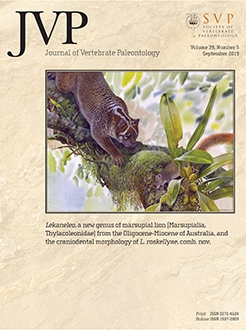The holotype of the elasmosaurid Aphrosaurus furlongi from the Maastrichtian levels of the Moreno Formation is redescribed and considered a valid species based on one autapomorphy, a deep trough in the ventral surface of vertebral centra of the posterior cervicals, and the following combination of features: wide and short clavicle-interclavicle complex with concave anterior border and without posterior medial process or medial ventral keel, humerus with anterior depression, and posterior limb with accessory element on the posterior margin. The phylogenetic analysis recovered A. furlongi as an elasmosaurid within Weddellonectia. The phylogenetic analysis generated a new topology of Elasmosauridae. A new clade, Euelasmosaurida, is recovered, including all post-Cenomanian elasmosaurids other than Zarafasaura oceanis. Euelasmosaurida is composed of two main clades: Elasmosaurinae and Weddellonectia. The latter includes mostly Weddellian elasmosaurids, including Aristonectinae. Based on the new phylogenetic results, the evolution of key cranial and postcranial characters is discussed. Two key intervals of elasmosaurid evolutionary history are recognized: the Cenomanian, with the appearance of Euelasmosaurida, and the Santonian, with the differentiation of Weddellonectia and Elasmosaurinae.
How to translate text using browser tools
14 April 2020
Elasmosaurid Phylogeny and Paleobiogeography, with a Reappraisal of Aphrosaurus furlongi from the Maastrichtian of the Moreno Formation
Jose P. O'Gorman
ACCESS THE FULL ARTICLE





